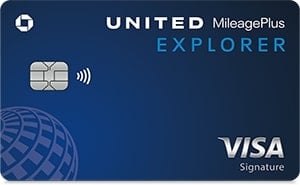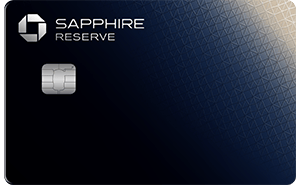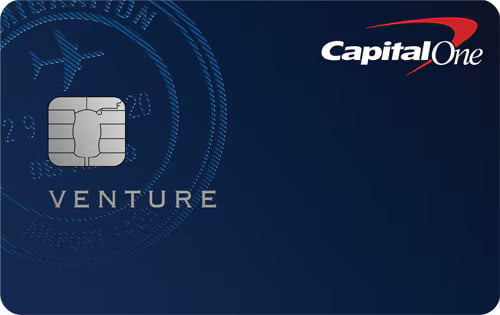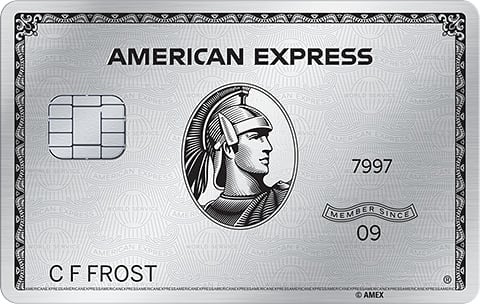Airline and TSA Carry-On Restrictions
Each airline has its own restrictions for how large your carry-on luggage can be.
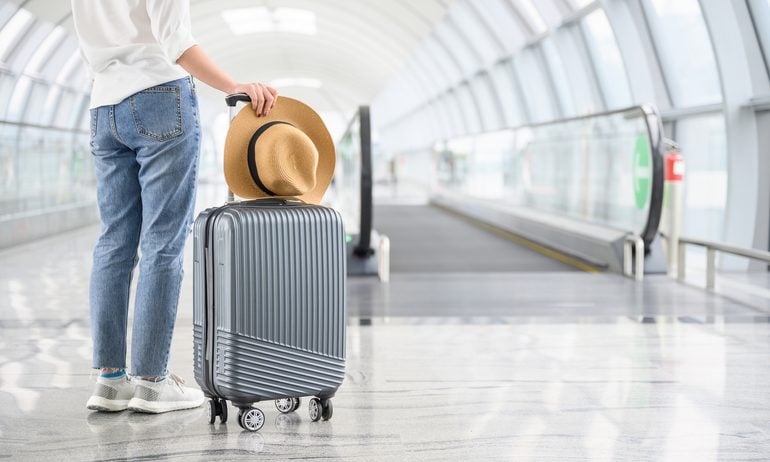
Many or all of the products on this page are from partners who compensate us when you click to or take an action on their website, but this does not influence our evaluations or ratings. Our opinions are our own.
Whether you’re purposefully packing light or supplementing your checked luggage, it’s important to keep Transportation Security Administration (TSA) carry-on luggage size and regulations in mind when packing a bag and heading to the airport.
After all, not all airlines allow full-size carry-ons for free, and most have slightly different rules on carry-on bag size. Don’t get caught unaware at security or the gate; hefty baggage fees and inconvenience may await.
» Learn more: Want TSA Precheck for free?
Here’s what you need to know about airline and TSA carry-on size allowances.
Airline-specific carry-on luggage rules
Airline carry-on dimensions differ depending on the carrier. When purchasing your flight, you’ll be able to see your carry-on and personal item limits.
A personal item is typically a small backpack, purse, briefcase, diaper bag, camera bag or any item of a similar size that can fit underneath the seat in front of you. A carry-on bag could be anything from a large backpack to a small rolling suitcase. But it’s less shape than size that matters, so here are carry-on luggage size restrictions for each of the major domestic airlines:
Alaska Airlines
On an Alaska Airlines flight, you can bring a carry-on and a personal item for free.
Carry-on bags are limited to 22 inches long, 14 inches wide and 9 inches high including wheels and handles. All three measurements shouldn’t add up to more than 45 inches.
For personal items, Alaska offers examples of a purse, laptop or briefcase.
Alaska doesn't list weight limits, but it says that passengers should be able to lift items that go in an overhead bin.
» Learn more: Guide to Alaska Airlines baggage and other fees
American Airlines
For an American Airlines flight, passengers get one personal item and one carry-on, no matter what type of fare they buy (elite members included).
Carry-on bags shouldn’t be larger than 22 inches long, 14 inches wide and 9 inches high including handles and wheels.
Dimensions of personal items should not exceed 18 inches long, 14 inches wide and 8 inches high and must fit under the seat in front of you.
There are no listed weight restrictions for carry-on luggage.
Delta Air Lines
Delta flyers are allowed one carry-on bag and one personal item.
Including wheels and handles, measurements may not exceed 22 inches long, 14 inches width and 9 inches high. The total length plus width plus height of baggage must not exceed 45 linear inches.
For personal items, Delta says size examples are purses, small backpacks and laptops.
There might be different restrictions if you are traveling with a partner airline.
Frontier
Frontier charges for both checked luggage and carry-on bags (but not a personal item), and the price depends on the route you fly and your ticket type.
Business tickets include a carry-on bag and two checked bags with an increased 50-pound weight allowance. Premium tickets and economy tickets also include a carry-on bag, but checked bags can be purchased a la carte. Basic tickets only include a free personal item.
Prices vary depending on if you buy the bags via the website or mobile app when you book the flight, at the ticket desk or the boarding gate.
Carry-on bags must weigh less than 35 pounds and must not exceed 10 inches deep, 16 inches wide and 24 inches high. Bags must fit in the overhead bins.
Checked bags must be no longer than 62 linear inches (length + width + depth) and must weigh under 40 pounds. Bags weighing more than 40 pounds will incur additional charges per bag per direction. Bags weighing 41-50 pounds will cost you $75 more (except business tickets) and bags weighing 51-100 pounds will cost $100 more.
Personal items cannot exceed 8 inches deep, 18 inches wide and 14 inches high.
» Learn more: Frontier baggage fees: How they work
JetBlue
All JetBlue passengers are allowed the same carry-on items. Blue Basic, Blue, Blue Extra, Blue Plus and Mint fares allow one carry-on and one personal item.
Including wheels and handles, length, width and height measurements may not exceed 22 inches long, 14 inches wide and 9 inches high.
Personal items can be no more than 17 inches long, 13 inches wide and 9 inches high or smaller to fit under the seat in front of you.
There are no weight limits for carry-on luggage on JetBlue, other than the fact you need to be able to lift them into an overhead bin without assistance.
» Learn more: Guide to JetBlue baggage, cancellation and other fees

Southwest Airlines
Southwest has carry-on restrictions that are similar to most other airlines — one personal item and one carry-on per traveler.
Carry-on measurements should not exceed 24 inches long, 16 inches wide and 10 inches high.
Personal items include a crossbody bag, briefcase, laptop case, backpack or full-sized pillows (not neck pillows).
A pet carrier is counted as either a personal or carry-on item.
Southwest doesn't list weight limits for carry-on items.
» Learn more: The guide to Southwest baggage and other fees
United Airlines
Most travelers flying with United can bring one carry-on and one personal item, but if you’re traveling on a basic economy fare, you’re allowed one personal item only, except on flights to South America, across the Atlantic Ocean or to international destinations across the Pacific. MileagePlus Premier Members or passengers with some MileagePlus credit cards, like the The New United℠ Business Card can also bring a carry-on bag on a Basic Economy ticket.
Including handles and wheels, the maximum dimensions for a carry-on are 22 inches long, 14 inches wide and 9 inches high.
Personal items are limited to 17 inches long, 10 inches wide and 9 inches high.
Things like jackets, umbrellas, mobility devices, food or other items you bought at the airport do not count as part of your allowance.
United doesn't publish weight limits for carry-ons.
Depending on the airline you fly with as well as how long you’re traveling for, you might wonder whether you’re better off traveling with a checked bag rather than a carry-on. This can be especially relevant if you’ve got some liquids with you that exceed the TSA carry-on liquid limits.
WANT TSA PRECHECK FOR FREE?
A number of popular travel credit cards reimburse you for the application fee for trusted traveler programs like TSA PreCheck and Global Entry. Among them:
$0 intro for the first year, then $150.
$795.
$95.
Statement credit of up to $120 as reimbursement when you charge the application fee for TSA PreCheck, Global Entry or NEXUS to the card. Available once every 4 years.
Statement credit of up to $120 as reimbursement when you charge the application fee for TSA PreCheck, Global Entry or NEXUS to the card. Available once every 4 years.
Statement credit of up to $120 as reimbursement when you charge the application fee for TSA PreCheck or Global Entry to the card. Available once every 4 years.
TSA liquid limits
Before you even make it to your departure gate, you have to clear a TSA checkpoint. This means you must adhere to the TSA liquid limit in order to make it through security.
How many ounces are allowed on a plane?
Containers that are 3.4 ounces or less are allowed, but there are other rules to keep in mind as well.
Carry-on liquid limit
The TSA liquid rule — also known as the 3-1-1 rule (3 ounces, 1 bag per 1 person) — is straightforward: "You are allowed to bring a quart-sized bag of liquids, aerosols, gels, creams and pastes in your carry-on bag and through the checkpoint. These are limited to travel-sized containers that are 3.4 ounces (100 milliliters) or less per item." Any liquids in larger containers will have to go into checked baggage (and are subject to overweight fees).
A basic clear, zip-top container qualifies as an eligible quart-size bag for passing through security.
The easiest way to manage the amount of fluids in your carry-on is to start with containers that are no larger than 3.4 ounces or 100 milliliters and your quart-sized bag.
The number of allowed liquids will depend on how much you can fit into your single quart-sized bag.
3-1-1 liquids rule exemptions
The 3-1-1 liquid rule has several exceptions if you're traveling with certain liquid medicines or baby food.
Medication
TSA allows larger amounts of certain medically necessary liquids, gels and aerosols in "reasonable quantities" for your trip. The amount allowed is not stated.
The only catch? You must declare the medication to TSA officers at the checkpoint for inspection, alongside any accessories associated with your medicine, such as freezer packs or syringes.
Labeling your medical items can help facilitate the screening process.
Baby food
Formula and breast milk are considered medically necessary liquids, and thus exempt from the carry-on liquid limit. Water and juice for babies is also allowed in quantities greater than 3.4 ounces or 100 milliliters.
These child and infant nourishment items are allowed in carry-on baggage and do not need to fit within a quart-sized bag. You may also bring teethers that are gel- or liquid-filled and canned/jarred/processed baby food in your carry-on baggage.
To avoid issues, tell the TSA officer what you have with you before the screening and remove them from your carry-on bag for easier identification.
» Learn more: 7 ways to avoid paying bag fees
Duty-free liquids
Another exemption to TSA liquid limits applies to duty-free liquids purchased during inbound international flights. It's important that these bags are secure and temper evident and stored in a transparent bag.
Be sure to keep the item's original receipt handy in case a TSA officer asks to see it.
» Learn more: Can you bring food through TSA?
Additional TSA carry-on rules
Lithium batteries
Lithium ion batteries have caught fire on several flights recently, so there are new regulations about where you can carry items that contain them.
Items with lithium batteries, including those handy portable power bank chargers for your phones, need to be in your carry-on, not in your checked luggage.
This also means your rechargeable toothbrush should be in your carry-on and not in a checked bag as well as any cordless curling irons with lithium batteries or butane.
Flammables
The only flammables allowed in a carry-on are cigars, cigarettes, disposable and Zippo lighters (with some restrictions), and dry batteries (like AAs or AAAs).
Camping and sports equipment
You can carry-on an air mattress with a built-in pump (by following special instructions), antlers, basketballs, footballs, baseballs, soccer balls, bike chains and bike pumps. Bicycle allowances vary by airline, but baseball bats, bear spray and bear bangers are never allowed — nor is aerosol insecticide.
Other items
There are some banned items, including knives, firearms and box cutters. A full list of which can be found on TSA’s website.
Still not sure if something you plan to carry-on is restricted? You can get live assistance between 8 am and 6 pm ET every day via AskTSA on X (formerly Twitter), Facebook Messenger, Apple Business Chat or texting “Travel” to AskTSA.
» Learn more: What foods you can bring on a plane
Final thoughts on TSA rules for carry-ons
No matter which airline you fly with, first make sure you know what size carry-on you’re allowed to bring onboard and are familiar with (and prepared for) TSA’s carry-on restrictions, too. Then, you can expect a smoother and less stressful airport and airliner experience.
How to maximize your rewards
You want a travel credit card that prioritizes what’s important to you. Here are some of the best travel credit cards of 2025:
Flexibility, point transfers and a large bonus: Chase Sapphire Preferred® Card
No annual fee: Wells Fargo Autograph® Card
Flat-rate travel rewards: Capital One Venture Rewards Credit Card
Bonus travel rewards and high-end perks: Chase Sapphire Reserve®
Luxury perks: American Express Platinum Card®
Business travelers: Ink Business Preferred® Credit Card
American Express Platinum Card®
Travel
Hotel
You can access over $3,500 in annual value with benefits and eligible purchases across travel, entertainment, and other benefits. Terms apply.



